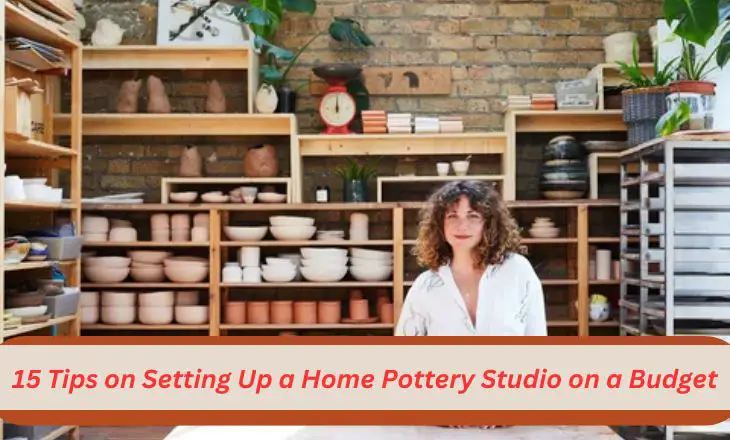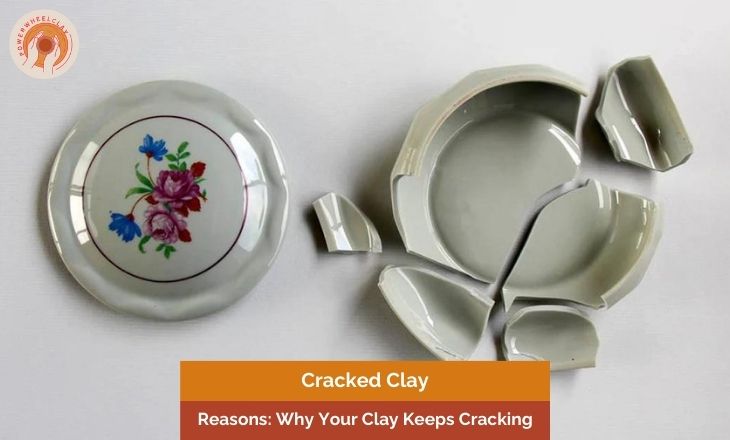Decorating Pottery – Great Ways to Decorate Clay
Decorative pottery has long been an art form that transcends time, culture, and trends. From ancient civilizations to modern artisans, the act of adorning clay vessels with intricate designs has always held a magical allure.
Exploring various methods of decorating pottery opens up a world of creative possibilities, allowing artisans to experiment with different approaches to enhance the aesthetic appeal of their creations. The techniques used in pottery reveal a diverse array of methods for shaping and crafting clay into intricate and beautiful forms.
Different Ways of Decorating Pottery
The embedding technique in pottery involves incorporating materials or designs into the clay items during the forming process, resulting in unique and visually captivating creations. From the intricate art of sgraffito to the mesmerizing effects of raku firing, The methods of decorating clay items offer their own unique appeal and charm. By exploring these techniques, you can add depth and character to your pieces, making them truly stand out in any collection.
Sgraffito involves carving designs into clay before firing, creating beautiful patterns and textures on the surface. Raku firing is a fast and intense process that produces stunning metallic finishes and unpredictable crackling effects. There are numerous methods of decorating pots, encompassing a wide range of techniques and enhancing their overall appearance. So let’s begin:
Pottery Decorating Technique # 1 – Glazing
An exciting aspect of pottery decoration is the versatility offered by glazing techniques applied after the bisque firing. The transformation of liquid glass to a non-porous solid surface not only protects the pottery but also adds depth and character to its appearance. Clear glaze, in particular, serves as a versatile option for sealing and enhancing existing decorations on the pottery while providing a sleek finish.
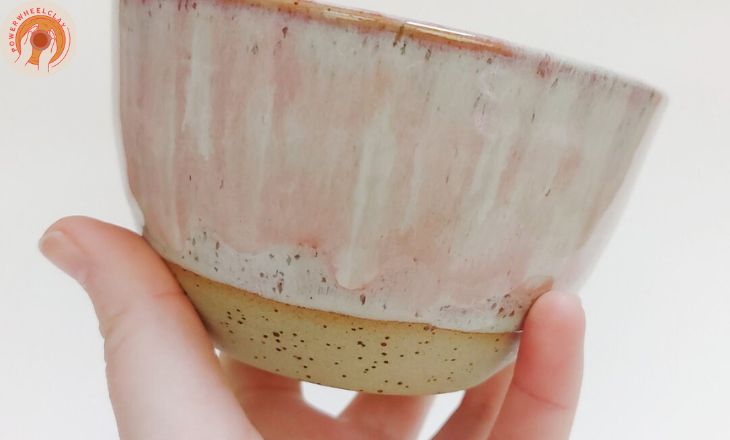
Colored or textured glazes offer endless possibilities for experimenting with different styles and patterns on clay items.
Pottery Decorating Technique # 2 – Underglazing
Underglaze is a versatile pottery decorating technique that involves applying color to unfired clay before the final firing process. This technique allows for intricate designs and vibrant colors to be permanently embedded in the pottery, creating visually stunning pieces. Artists can achieve a wide range of effects with underglazing, from soft pastels to bold and saturated hues.
By layering different colors of underglaze and utilizing various application techniques, artists can create dynamic surfaces that catch the eye and engage the viewer on multiple levels. Underglazes can be used in combination with other decorative methods such as carving or sgraffito to add further dimension and visual interest to the finished piece.
Pottery Decorating Technique # 3 – Overglazing
Overglazing is an exciting pottery decorating technique that adds a touch of luxury and sophistication to ceramics. The unique metallic colors and effects offered by overglaze lusters like gold, platinum, and mother of pearl can truly elevate the appearance of a piece. These special glazes contain metal particles in liquid form, which creates a stunning visual impact once fired on the already-glazed pottery.

The firing process for overglaze lusters typically occurs at specific temperatures ranging between cone 017 and 022, ensuring the metals fuse seamlessly with the surface for a durable finish. With overglazing, potters can transform ordinary pieces into exquisite works of art that showcase a fusion of traditional craftsmanship with contemporary aesthetics.
Pottery Decorating Technique # 4 – Decorating Slip
Pottery decorating slip plays a crucial role in the ceramic world, acting as both an adhesive and a creative tool. Its ability to join unfired clay pieces seamlessly is akin to magic, allowing artists to create intricate and sturdy structures. However, its use extends beyond mere practicality; when infused with ceramic stains or oxides, decorating slip transforms into a versatile medium for embellishing pottery.
The process of applying colored slips onto ceramic forms offers endless possibilities for artistic expression. From delicate brushwork detailing to bold swaths of color, the use of decorating slip adds depth and character to pottery creations.
Pottery Decorating Technique # 5 – Slip Trailing
One popular pottery decorating technique is slip trailing, which involves using a slip applicator to create intricate designs on clay pieces. The slip applicator, also known as a slip bulb or slip trailer bulb, is a simple tool that allows artists to control the flow of clay slips with precision. By filling the bulb with a thick clay slip and attaching a nozzle, artists can easily draw patterns, lines, and shapes onto their pottery.

The key to successful slip trailing lies in mastering control over the pressure applied to the bulb. Squeezing the bulb gently results in a thin line of slip while applying more pressure produces thicker lines or dots.
Pottery Decorating Technique # 6 – Oxides
Oxides offer a versatile range of possibilities for pottery decoration. Iron oxide is a popular choice due to its ability to create rich earthy tones ranging from rusty reds to deep browns. When applied judiciously and with skill, iron oxide can evoke a sense of antiquity and timelessness in pottery pieces.
Beyond iron oxide, other metal oxides such as copper oxide and cobalt oxide provide artists with an extensive palette to work from. Copper oxide yields stunning green hues that can add vibrancy and energy to pottery designs. Cobalt oxide produces striking blue shades that evoke feelings of tranquility and serenity.
Pottery Decorating Technique # 7 – Marbling
Marbling is a versatile pottery decorating technique that involves swirling different colored clays or slips together to create unique patterns on the ceramic surface. This method allows artists to play with colors and shapes, resulting in stunning visual effects that can mimic natural stone or abstract designs.
By combining various clays with contrasting hues, marbling adds depth and texture to pottery pieces, making each creation truly one-of-a-kind. Let’s have a look at 3 approaches to marbling:
a) Agate Ware
Agate ware is a mesmerizing pottery decorating technique that involves blending different colored clays to achieve a stunning marble effect. To create agate ware, start by selecting a variety of colored clays that complement each other well. Experiment with different combinations and techniques to achieve the desired marbling effect.
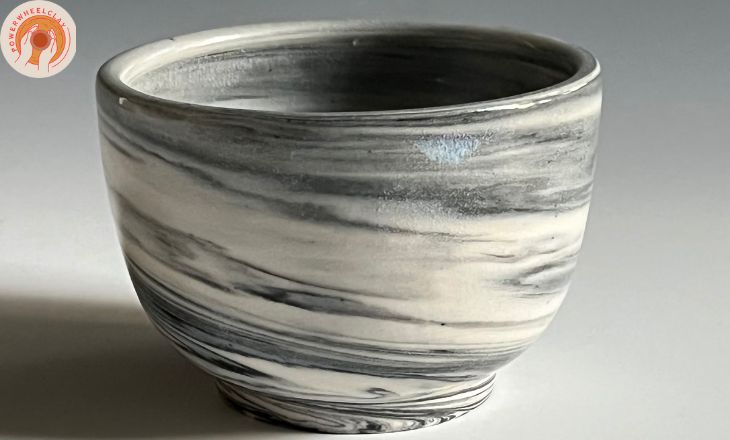
You choose to hand build or use the potter’s wheel, the key lies in manipulating the clays skillfully to blend them seamlessly while maintaining distinct patterns for a visually striking finish.
b) Marbling with Slip
Marbling with slip-on leather-hard pottery opens up a realm of creative possibilities. The blending of colors and the fluid movements created by the slip-trailing bulbs or plastic bottles add a dynamic element to the surface of the pottery. This technique is particularly striking on larger, flat pieces like plates and platters, where the marbled design can truly shine.
The beauty of marbling with slip lies in its unpredictability – no two pieces will ever be exactly the same.
c) Marbling with Underglaze
Once the underglaze is swirled to your liking, gently press a piece of bisque ware onto the surface and lift it off carefully. The shaving cream will transfer the marbled design onto the pottery, creating a unique and mesmerizing pattern. Remember to wash off any excess shaving cream and allow the underglaze to dry before firing it in the kiln for a beautiful finish.
Pottery Decorating Technique # 8 – Carving
In pottery decoration, carving is a delicate yet impactful technique that requires a balance of timing and skill. Waiting for the clay to firm up before carving allows for more control and precision in shaping the design. Opting for a slightly softer leather hard stage provides just the right amount of flexibility to create smooth, rounded shapes with ease while minimizing clay dust.
Carving at the soft leather hard stage opens up a world of creative possibilities, enabling artists to experiment with intricate patterns and unique textures. The malleability of the clay at this point allows for effortless sculpting, resulting in beautifully detailed designs that add depth and dimension to the pottery. By harnessing the pliability of softened clay, artisans can achieve a harmonious blend of artistic expression and technical finesse in their carved creations.
Pottery Decorating Technique # 9 – Sgraffito
Sgraffito is a fascinating pottery decorating technique that allows artists to create intricate designs by scratching through layers of colored slip or engobe. This process, which dates back to ancient times, adds visual depth and texture to the surface of the pottery. The contrast between the exposed clay body and the applied color creates a striking effect that can elevate a piece from ordinary to extraordinary.
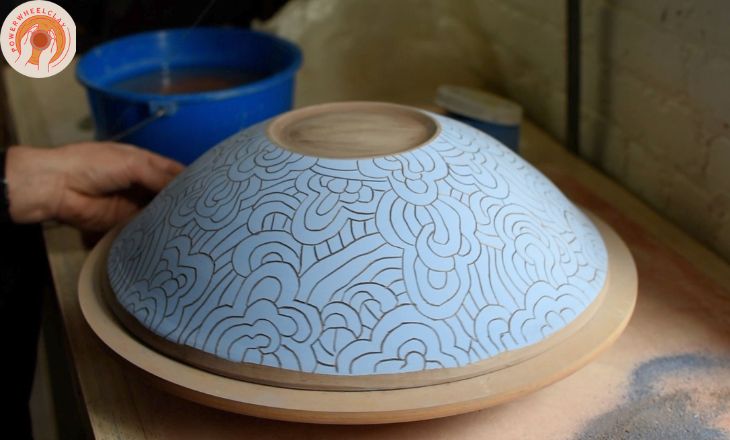
By carefully scraping away portions of the colored surface, potters can reveal different layers underneath. Sgraffito can be used on both greenware and bisque ware, providing flexibility in when and how this technique can be applied to pottery projects.
Pottery Decorating Technique # 10 – Mishima
Mishima pottery decorating technique offers a unique twist to traditional carving methods, as it involves not only creating intricately carved designs but also filling them with contrasting colors. By carefully selecting colors that complement each other, artists can achieve a harmonious balance between the carved lines and the colored inlays.
The process of coloring in the carved lines requires precision and skill, as it demands careful control over the application of pigments to ensure clean and crisp results. Mishima technique not only enhances the aesthetic appeal of pottery but also adds a tactile dimension to the finished piece. The raised areas created by filling in the carved lines add texture and depth, inviting touch and further engaging viewers on a sensory level.
Pottery Decorating Technique # 11 – Chattering
By using a chattering tool in a controlled manner, potters can create intricate patterns that evoke movement and energy. One of the fascinating aspects of chattering is its unpredictable nature. While potters can guide the tool across the clay, the final pattern emerges organically as a result of the tool bouncing off the surface at irregular intervals.
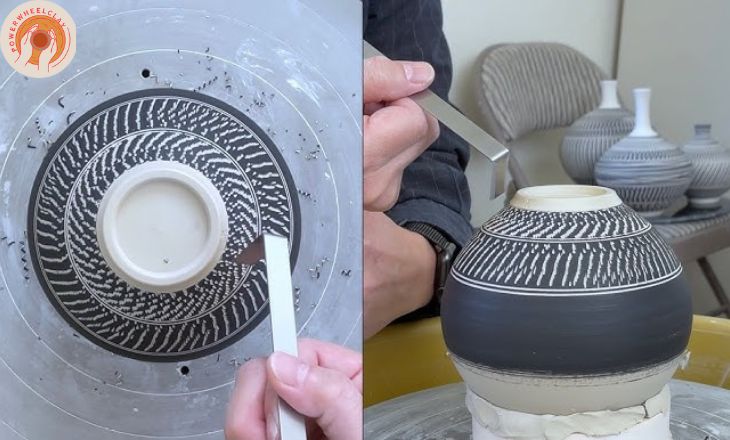
The contrast between the smooth sections of the pot and the textured areas created by chattering creates a visually captivating interplay between light and shadow.
Pottery Decorating Technique # 12 – Terra Sigillata
One of the key benefits of using terra sigillata is its ability to enhance the natural beauty of the clay body, bringing out its unique characteristics and colors. By carefully applying multiple thin layers of terra sigillata to your pottery, you can achieve a lustrous, almost glass-like finish that adds depth and richness to your piece.
If you choose to brush on the terra sigillata, spray it evenly across the surface, or use other creative techniques like sponging or dripping, each method will yield a different outcome that adds an element of surprise and individuality to your work.
Pottery Decorating Technique # 13 – Stencils
One creative way to use stencils in pottery decorating is to apply them on bisque-fired pieces and then sponge or brush glaze over them. The result is a crisp design with sharp edges. Experimenting with different shapes and sizes of stencils can lead to endless possibilities for unique designs.
For greenware pottery, you can use paper stencils to etch patterns directly into the clay surface before firing. This technique creates a beautiful raised design once the piece is glazed and fired. Combining stencil techniques with other decoration methods like carving or painting can result in truly stunning and intricate pottery pieces that stand out.
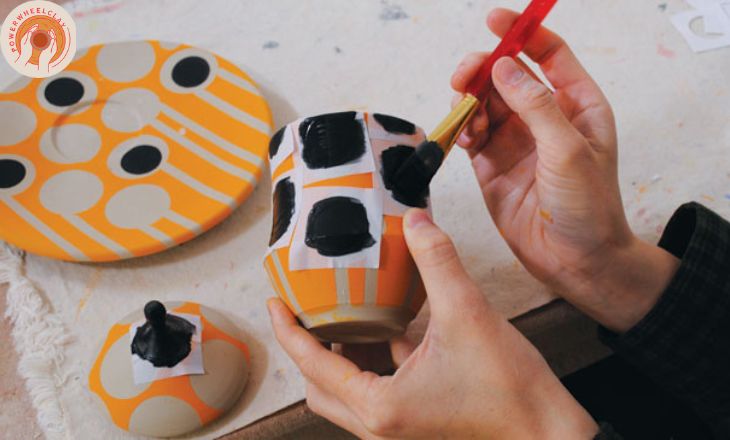
Craft foam stencils are perfect for creating intricate patterns on curved surfaces such as bowls or mugs due to their flexibility. By carefully positioning and securing the stencil onto the pottery surface, you can easily transfer the design using underglazes or slips, allowing for precise application and vibrant colors that pop against the clay body.
Pottery Decorating Technique # 14 – Lettering
Each style of writing offers a unique aesthetic to your piece, allowing you to express your creativity in different ways. If you are carving letters into the clay or use pre-made stamps, the process can be both meditative and rewarding.
This method is perfect for those looking for a clean and polished finish to their pottery. As you experiment with different lettering techniques, consider how they complement the overall theme and design of your pottery.
Pottery Decorating Technique # 15 – Transfers and Decals
When using transfers and decals on pottery, it’s important to carefully follow the instructions provided by the manufacturer. Proper application techniques can ensure that the image transfers onto the pottery smoothly and accurately. This can be especially beneficial for artists who want to incorporate detailed imagery or patterns into their work without having to hand-paint each element individually.
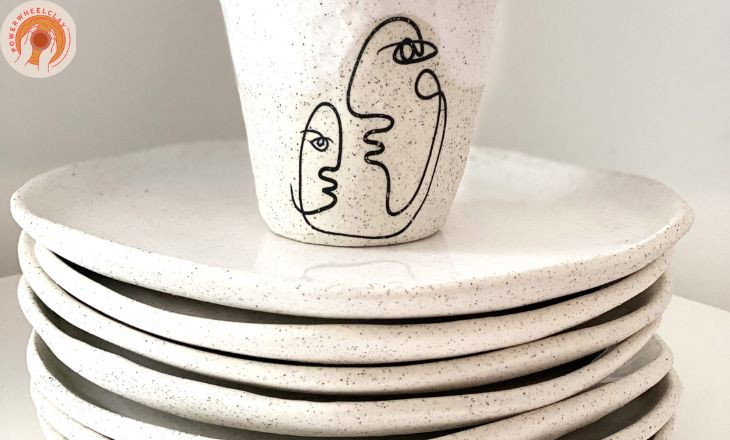
Combining underglaze transfers with other decorative techniques, such as carving or sgraffito, can result in multi-dimensional and dynamic ceramic pieces.
Pottery Decorating Technique # 16 – Bubble Glazing
Bubble glazing is a fascinating pottery decorating technique, that allows for experimentation with different colors and techniques, ensuring that no two pieces will ever look exactly the same.
Not only does bubble glazing result in visually stunning pottery, but it also encourages creativity and spontaneity in the process. The act of blowing bubbles onto the surface of the pottery fosters a sense of playfulness and exploration, opening up endless possibilities for innovative designs.
Pottery Decorating Technique # 17 – Modeling
To start modeling your pottery piece, ensure the surface is still slightly damp for easier manipulation. Utilize tools like clay sculpting tools or even everyday household objects to help shape and texture the clay.
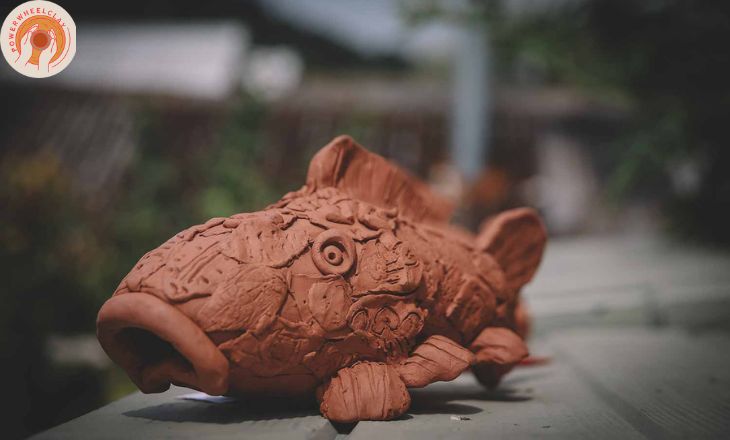
Suppose you are going to adorn your pot with abstract patterns, figurative elements, or nature-inspired motifs. In that case, modeling opens up a world of creative opportunities in the realm of pottery decoration.
Pottery Decorating Technique # 18 – Wax Resist
By selectively applying the wax resist to certain areas of the pot, artists can control where the glaze or underglaze will be absorbed, resulting in unique and visually striking pieces.
One interesting aspect of using wax resist is its ability to create a layered effect on pottery. By applying multiple layers of wax resist and different colors of glaze or underglaze, potters can build up complex designs that add depth and dimension to their work.
Pottery Decorating Technique # 19 – Textured Rollers
Textured rollers transform plain surfaces into works of art. By experimenting with pressure and rolling techniques, artists can achieve subtle or bold textures that truly enhance their pieces.
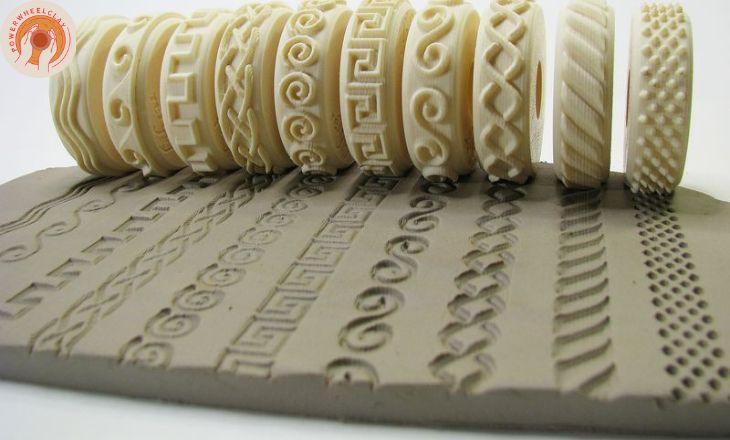
The raised patterns left behind by the roller add visual interest and tactile appeal to the finished pottery piece. This technique is not only aesthetically pleasing but also provides a sensory experience for both the artist and anyone admiring the final creation.
Pottery Decorating Technique # 20 – Burnishing
With the burnishing technique, the rough edges and imperfections seem to melt away under the pressure of your hands. The tactile sensation of smoothing out the clay, meticulously working towards that desired sheen, is a meditative experience in itself. Each stroke of the burnishing stone reveals a glimmering potential hidden within the earthy material, almost like coaxing a dormant spark to ignite into brilliance.
Burnishing clay is not just about smoothing the surface of a pot. It also helps to compress the clay particles, making the pottery stronger and more durable. By applying pressure with a smooth object, you are essentially closing up any pores in the clay body, creating a polished finish that enhances the overall aesthetic appeal of your piece.
Pottery Decorating Technique # 21 – Kintsugi
Kintsugi transforms flaws into something beautiful and celebrated. It encourages us to see beauty in the broken, strength in vulnerability, and resilience in adversity. By honoring the cracks instead of hiding them, Kintsugi teaches us that true beauty lies in embracing our scars and seeing them as integral parts of our history and identity.
Through Kintsugi, we are invited to shift our perspective on what it means to be flawed or broken. Instead of viewing imperfections as failures to be erased, we can see them as opportunities for growth, transformation, and ultimately, enhanced beauty. Just like the mended pottery adorned with gold seams, we too can embrace our past wounds and turn them into sources of strength and grace.
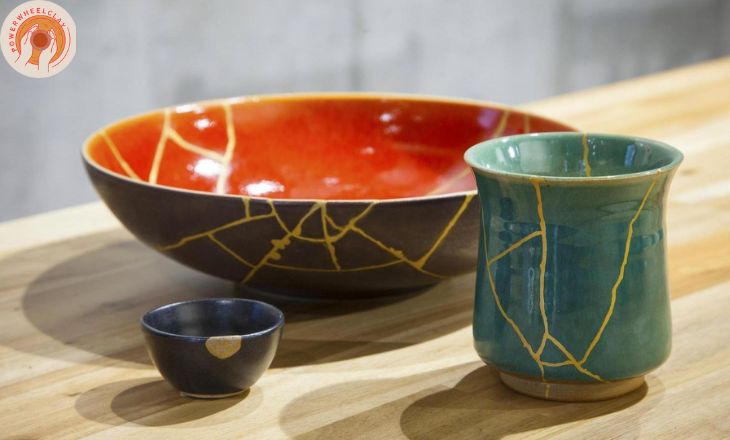
The art of Kintsugi teaches us to embrace imperfections and transform them into beauty. This ancient Japanese technique not only repairs broken pottery but elevates it to a new level of elegance and uniqueness. Each crack in a piece restored with Kintsugi tells a story – a story of fragility, strength, and resilience.
Conclusion
Decorating pottery offers a wonderful opportunity to showcase your creativity and artistic flair. It is a creative and rewarding process that allows artists to express their individuality and imagination. Whether you prefer intricate carving techniques, bold colors, or organic textures, there is something for everyone to explore in the world of pottery decoration.
By experimenting with different methods and combining various techniques, you can truly make your pottery pieces unique and personalized. Each technique invites you to infuse your pottery with your unique style and personality. It is not just about the finished piece, but also about the journey of discovery and self-expression it affords.
FAQs
How Do We Decorate Clay?
It can be done with different techniques. One is by using glazes, which are liquid coatings that add color and texture to the surface of the clay. Another method is through carving or incising designs into the surface. You can also use underglazes, slips, or engobes to add color and detail to your clay creations before firing them in the kiln.
What Kind of Clay is Used for Decorations?
Various types of clay can be used for decorations, depending on the desired outcome and technique. Air-dry clay is a popular choice for beginners and children as it does not require firing in a kiln. For more professional or intricate decorations, artists often use polymer clay, which can be baked in a home oven to harden.
How Pottery is Made and Decorated?
Pottery is made through a process called clay modeling, where clay is shaped and molded into various forms such as bowls, vases, or plates. After the pottery has been fired, it can be decorated in numerous ways. One common method is glazing, where a liquid mixture of minerals and coloring agents is applied to the surface of the pottery. Other decorative techniques include painting with underglazes or overglazes, carving designs into the surface, or adding textures through stamping or etching.
What is used to decorate pottery?
The most common used for ceramic work are Latex, Epoxy and Acrylic paint. Glaze – it’s used to waterproof, decorate and give pottery a smooth, glass-like surface once it has been fired once. Carving – decorating your pottery with a use of a knife.

